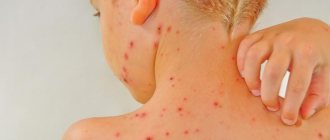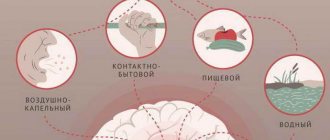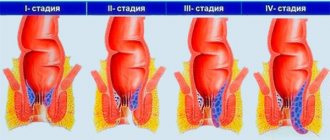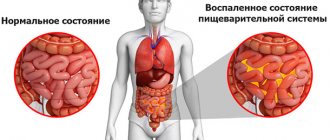Chickenpox in adults is a rare infectious disease, which is due to the frequency of activation of herpes type 3 in childhood. Adults are faced with a severe form of chickenpox, which is accompanied by a number of consequences. B01 - code for chickenpox according to ICD 10 (international classification of diseases).
Chickenpox in adults is a rare infectious disease.
How can you get infected?
Chickenpox is caused by infection with the Varicella Zoster virus (HSV-3, or herpes simplex virus type 3). During the incubation period, which lasts 2 weeks, an adult may not experience chickenpox symptoms.
Doctors have noticed that the older the patient, the more time passes before pronounced signs of pathology appear. For example, the body temperature of an infected person may rise after 3 weeks of contact with a carrier of the virus.
How is the chickenpox virus Varicella Zoster transmitted? Doctors identify three routes of transmission:
- Airborne (through saliva, during sneezing).
- Tactile (close communication, kissing).
- Close contact with a person with herpes zoster.
The pathogen enters a healthy body through the epithelial tissues of the respiratory tract, then moves to regional lymph nodes. The virus enters the bloodstream along with lymph and causes intoxication syndrome. Externally, the disease manifests itself on the skin and mucous membranes in the form of blistering rashes.
Re-infection with chickenpox is possible with HIV, after chemotherapy and organ transplantation. The state of the immune system in such patients is unsatisfactory, which is why relapses of many diseases occur.
Interesting facts about the disease
To understand the specifics of the disease, patients should familiarize themselves with interesting facts:
- the disease is caused by the chickenpox virus;
- smallpox is highly contagious, people with suppressed immune systems who have not been vaccinated are at risk;
- the infection spreads by airborne droplets - just like colds and flu, so you can get infected anywhere - on public transport, in the office, at training;
- Doctors usually make a diagnosis based on signs and symptoms - additional tests are rarely required and are the exception rather than the rule.
Chickenpox incubation period in adults
This period of time is characterized by the absence of any symptoms and lasts from the moment of infection until the first signs of intoxication appear.
The classic development of the clinical picture suggests that the incubation period lasts approximately 2 weeks, however, the older a person becomes, the longer it takes from infection to the first symptoms. In an adult, it is considered normal if the temperature rises three weeks after contact with an infected person.
Complications
If chickenpox is diagnosed in adults, complications occur in a third of cases. This usually requires treatment with antibacterial drugs. Thus, the following complications occur after chickenpox in adult men and women:
- Staphylococci and streptococci can cause bacterial superinfection of the skin. This complication occurs most often and leads to the formation of abscesses, boils and phlegmons at the site of the vesicles. Surgical treatment is often indicated for patients.
- A third of complications occur due to chickenpox pneumonia with the formation of foci of bacterial infiltrates. In this case, the patient experiences a severe cough, shortness of breath and chest pain.
- The most dangerous consequences of chickenpox in adults are associated with damage to internal organs. In this case, the mortality rate reaches 15 percent. The virus can damage the pancreas, spleen, heart, lungs, and liver. Usually there is damage to several internal organs at once. A sharp deterioration in health occurs on the third to fifth day, severe abdominal pain appears.
- Damage to the central nervous system is observed three weeks from the onset of the disease. In this case, the cerebellum is affected, which is expressed in limb tremors, imbalance, and nystagmus. There may also be diffuse encephalitis, manifested by headaches, mental disorders, confusion, vomiting, nausea and epileptic seizures. The severe neurological consequences of encephalitis can persist for a long time.
- Liver damage is less common. Hepatitis often develops against the background of reduced immunity and often ends in death.
Symptoms and first signs
According to statistics, in adults over 18 years of age, the severity of the disease and the frequency of complications after chickenpox are the same as in a 20-year-old person as in a 50-year-old person. However, in the older population, due to possible immunity disorders and existing chronic diseases, a greater number of cases of complications of this disease are recorded.
What are the symptoms and first signs of chickenpox in adults? Chickenpox begins (see photo) like a cold, flu, with general intoxication:
- Pain in muscles, joints
- A slight increase in temperature to subfebrile levels of 37.3-37.5C
- General weakness
- Headache
As soon as pink spots appear on the scalp and face, the period of rashes begins:
- Signs of intoxication of the body increase, high temperature up to 40C, chills, weakness, etc.
- A profuse rash throughout the body creates severe itching of the skin, even on the mucous membranes of the upper respiratory tract and in the mouth enanthems form. People after 20 years old always develop rashes on the genitals, which is accompanied by severe pain when urinating. First a spot appears, then a bubble with liquid and a depressed center. If the crust is burned with alcohol dye or torn off, a scar will remain. The bubbles then burst, releasing liquid and subsequently forming a dried crust, which, with regular processing, leaves no trace in the future. When a secondary infection penetrates the wound, the course of the disease becomes more complicated, weeping pustules appear, which after healing leave scars on the body.
- The patient's lymph nodes are enlarged - behind the ear, inguinal, submandibular and axillary, they become painful on palpation.
- An undulating course of rashes that lasts about 10 days.
- If the patient has a very weakened immune system, the rash can provoke the development of fasciitis, abscesses and even sepsis.
Sometimes in adults, chickenpox begins with signs of cerebral edema, nervous system disorders, and also as primary chickenpox pneumonia or encephalitis, with the following symptoms added:
- Nausea, vomiting
- Irritation from sharp sounds and bright lights - sound sensitivity, photophobia
- Coordination of movement, convulsions, and general muscle weakness are impaired.
First signs
What are the symptoms and first signs of chickenpox in adults? Chickenpox begins like a cold, flu, with general intoxication:
- Slight temperature. When the above symptoms appear, a slight increase in temperature is also observed. This is the initial stage of the body's resistance to the virus.
- Impaired movement coordination. Occurs due to headache, fever, malaise.
- General weakness of the body.
- Possible nausea.
The course of the disease is accompanied by a lack of appetite, sleep disturbances, and a constant feverish state, the peak of which, characterized by a sharp rise in temperature, occurs on the first day of the development of the infection.
Chickenpox in adults is quite severe and manifests itself with a number of severe symptoms. To avoid the development of complications, it is necessary to contact a specialist when the first signs of pathology appear and begin complex therapy.
Forms and stages of the disease
The disease occurs with or without obvious symptoms. Dermatologists identify several characteristic forms of chickenpox:
| Light | the rash is not abundant, the condition is satisfactory, there are no secondary rashes, there are no enanthems. |
| Medium-heavy | Intoxication, weakness, and headaches were noted. Repeated rashes are observed, the period is up to five days. A specific rash is noticeable, enanthems are detected. The temperature reaches 39 degrees. |
| Heavy | pronounced intoxication, high temperature (up to 40 degrees). Numerous blisters cover the entire body, including the scalp and genitals. There is a high risk of damage to internal organs. Often the picture is complicated by a pyogenic infection. |
The hidden or atypical form has several varieties. All of them are dangerous with serious complications:
| Generalized | noted in patients receiving chemotherapy and people with reduced immunity. Internal organs, the nervous system, are affected, the brain is affected, and chickenpox pneumonia develops; |
| Hemorrhagic | difficult to treat, the prognosis for a weakened immune system is extremely unfavorable; |
| Gangrenous | the variety is characterized by the addition of pathogenic microflora, severe poisoning of the body, necrosis of certain areas of the skin, and poor health. |
Main symptoms
In older people, the disease progresses somewhat differently than in children. It has the following features:
- more severe course of the infectious process;
- severe intoxication;
- sometimes - an increase in body temperature to 40 degrees and above;
- acne damage to a larger area of the skin of the face, head and body;
- the appearance of rashes on days 2-3 of the disease;
- formation of pustules in 50% of adult patients;
- rash not only on the skin, but also on the mucous membranes of the mouth, genitals (in most people);
- the formation of pockmarks at the site of deep inflammation;
- prolonged low-grade fever;
- the occurrence of lymphadenopathy;
- development of complications with a probability of 20-30%;
- the risk of developing a severe atypical form of chickenpox after 20 years of age.
The incubation period in adults ranges from 7 to 21 days. After its completion, a severe fever is observed, which lasts for at least 2-3 days.
Full skin manifestations of the disease are observed only on the 5th day. At this time, almost any person will understand that he has chickenpox. However, someone may confuse it with rubella.
Click to enlarge
Chickenpox during pregnancy
If a woman does not have immunity to the chickenpox pathogen at the time of conscious planning of pregnancy, she will be recommended to undergo appropriate vaccination. Infection during pregnancy is dangerous for the fetus until about 20 weeks. At this stage, the virus causes intrauterine death of the fetus, which ends in miscarriage or stillbirth. It is also possible to develop severe defects that lead to disability of the born child.
At later stages, the effect of the virus on the body of both mother and fetus weakens, reaching a second peak immediately before childbirth. Infection with chickenpox in the later stages is fraught with the development of pneumonia, which can also lead to the death of the child. In such cases, special therapy with immunoglobulins and specific antibodies is carried out.
Lack of immunity to chickenpox in general is not an indication for termination of pregnancy.
Prevention of chickenpox
Chickenpox vaccination for adults who did not have it in childhood is prescribed if they belong to one of the risk groups:
- Since the risk to the life of the fetus is very high, women planning a pregnancy are referred for vaccination.
- People who have immunodeficiency or any malignant diseases can also be vaccinated.
- Chickenpox prevention is also carried out for those who come into contact with a large number of other people (health workers, educators and teachers).
- People who have been in contact with someone who has chickenpox can also be vaccinated.
- Expert
- Latest articles
- Feedback
About the expert: +MAMA
We are the friendliest site for moms and your babies. Questions and answers, unique articles from doctors and writers - we have it all 
- How to lose weight after childbirth - 12/16/2019
- Second screening during pregnancy - 12/16/2019
- Precursors of labor in multiparous women - 12/13/2019
- How long do newborns sleep - 12/12/2019
- How to remove belly fat after childbirth - 12/12/2019
- Thrush in the mouth of a baby - 11/29/2019
- How to breathe correctly during labor and childbirth - 11/28/2019
- What to eat while breastfeeding - 11/26/2019
- How to wean a child from breastfeeding - 11/25/2019
- Pregnancy planning – 11/21/2019
See all
How to treat chickenpox in an adult?
Comprehensive treatment of chickenpox in adults includes antiviral therapy and symptomatic measures; in complex cases, placement in an infectious diseases hospital is indicated. To avoid negative consequences, you must strictly follow medical recommendations on how to treat chickenpox in adults at home:
- Limit any types of loads. High fever and the appearance of neurological symptoms necessarily require bed rest.
- Isolate the patient for the entire “infectious” period, since susceptibility to chickenpox in people without specific immunity is 100%.
- Follow a low-carbohydrate diet with normal protein content: unsweetened dairy products, vegetables, fruits.
- Keep skin clean. It is recommended to take a daily shower at a comfortable temperature, without a washcloth, steaming or rubbing. Gently dry the wet body with a soft towel so as not to damage the crusts.
- Increase fluid intake, priority is berry fruit drinks.
- Carry out antiviral therapy. The drugs Acyclovir, Virolex, Panciclovir and others block the reproduction of the virus, stop the growth of rashes, and prevent the generalization of infection and complications.
- Reduce the temperature if it rises to 38 degrees. Paracetamol and ibuprofen can be used as an antipyretic. Taking aspirin for chickenpox is strictly prohibited!
- Treat rashes with alcohol- and water-based antiseptics to relieve itching and drying. Apply the solution, gel, ointment after bathing pointwise, 1 – 2 times a day.
- Take antihistamines (Suprastin, Diazolin, Tavegil). They reduce the itching of chickenpox in adults and promote faster drying of the elements.
- Include antibiotic ointments in treatment if a bacterial infection is identified.
- If papules appear in the oral cavity or on the genitals, rinse with antiseptic solutions (furacilin, weak potassium permanganate, boric acid).
- Place a person in a hospital for any manifestations of severe or atypical chickenpox.
How long chickenpox lasts in adults depends on the severity of the condition and the intensity of the rash. In mild cases, about 2 weeks pass from infection to complete recovery, in more complex cases it takes a month or more: up to 21 days – latent period, up to 10 days – wave-like addition, up to 20 days – cleansing of the skin.
Chickenpox symptoms depending on the form of the disease
There are 3 options for the course of the disease:
- A mild form, in which the first pronounced symptoms of chickenpox are observed from 2 to 4 days, while the body temperature is low-grade, the number of rashes is small, and there are no or very few “pimples” on the mucous membranes. Recovery comes quickly.
- Moderate form, characterized by fever up to 39 degrees for 4-6 days, damage by vesicles to a larger area of the skin, intense itching.
- A severe form, in which the body temperature is fixed at high levels for 7 days, a rash covers almost the entire body, nausea, vomiting and itchy skin occur.
- Gangrenous form caused by microbial insemination of pockmarks and further intoxication. Occurs with reduced immunity.
- Hemorrhagic form, in which bleeding occurs in the area of the rash. It is extremely rare, but has a serious prognosis.
- A generalized form, dangerous because with weak immunity, internal organs are involved in the pathological process, which leads to suppression of their functions.
- Atypical. A blurred clinical picture is observed. In this case, it is very difficult to recognize chickenpox in adults, because its symptoms are very similar to a cold. The first symptoms include mild malaise and low to normal body temperature. There are no signs of intoxication. Atypical chickenpox is observed in adults who have received immunoglobulin for prophylactic purposes. Despite the favorable course of the disease, the patient is advised to follow the doctor's instructions.
Folk remedies
Treatment with folk remedies is not officially recognized by medicine, but has the right to exist.
- Immunity can be supported with a tincture of chamomile flowers, calendula, basil leaves and lemon balm. For the same purpose, you can use a mixture of lemon juice and honey, which should be taken three times a day, 1 tsp.
- To reduce pain and itching on the skin, use a soda solution (1 glass of warm water, 1 teaspoon of soda), which is used to dip the affected areas.
- Baths with chamomile or calendula, celandine remove the manifestations of chickenpox.
- At elevated temperatures and if you have a headache, viburnum drink, sea buckthorn tea, rosehip infusion and cranberry juice help well.
- At home, you can brew chopped parsley leaves and drink 1-4 glasses several times a day.
- Those who do not tolerate the acute period of intoxication well can try fresh celery juice.
- Skin itching and pain disappear perfectly under the influence of tea tree oil, applied directly to the elements of the rash.
- Blueberries have an excellent antiviral effect in any form.
Traditional methods do not replace qualified medical care and taking medications prescribed by a doctor.
Important rules for successful treatment of chickenpox
Treatment of chickenpox in men and women is carried out at home; complicated, advanced forms of the disease are treated in a hospital. For successful treatment of the disease, it is very important to follow the correct daily routine, as well as a special diet.
The patient must be provided with maximum rest, if possible, bed rest. Its duration must be at least 21 days. This is necessary in order to prevent the further spread of chickenpox and activate all the body’s immune forces to effectively fight the disease.
Maximum attention should be paid to changing clothes, underwear and bed linen. It is recommended to do this at least twice a day, after each treatment of the rash. The patient's room should be regularly ventilated.
During the first 6-7 days of illness, it is under no circumstances recommended to wash; after that, you are allowed to use a warm shower - but without using washcloths and soap. A person suffering from chickenpox should have his own hygiene supplies, towel and utensils.
A diet for chicken pox involves excluding spicy, fatty, fried, pickled foods, nicotine, alcoholic and carbonated drinks from the menu. It is recommended to stew, boil, bake, cook in a slow cooker or steam all dishes.
The basis of the diet should be fermented milk products, fresh fruits, vegetables, cereals (oatmeal, millet, buckwheat), lean meats and poultry, and fish.
An important rule for treating chickenpox is rest and bed rest.
Prevention
Usually people get chickenpox in early childhood, since the pathogen is extremely easily transmitted from person to person. However, some people reach adulthood without having immunity to the Varicella Zoster virus.
To avoid getting sick, it is recommended to undergo a special vaccination, after which lifelong immunity will be developed, as if the patient had chickenpox. You can get vaccinated even if you had contact with a sick person and no more than 72 hours have passed since that contact.
Features of the causative agent of chickenpox
The pathogen that causes this disease is a herpes virus. The peculiarity of this group of viruses is that they enter the human body and never leave it (or inhabit it for quite a long time). They live in nerve ganglia (nodes) and for the most part are in a “sleeping” state. But with stress, increased fatigue, after suffering from infectious diseases - with a general decrease in immunity, the virus is activated and reminds itself.
The causative agent of chickenpox is the herpes virus ||| type (Varicella Zoster). In addition to chickenpox, it also causes shingles. Since after suffering chickenpox a person develops persistent lifelong immunity, the activated virus subsequently manifests itself precisely in the symptoms of the second disease.
Chickenpox vaccine for adults
The chickenpox vaccine is not included in the mandatory vaccination schedule and is used only at the request of the person. Vaccination against chickenpox among adults can be used at any time, especially if the person has not previously suffered from this pathology in an active clinical form. In most situations, persons whose work involves daily contact with children are interested in vaccination against chickenpox, since chickenpox is a fairly common infectious pathology among organized children's groups.
Currently, vaccines such as Okavax and Varilrix, which exhibit identical effectiveness, are used to vaccinate against chickenpox in adults.
- Vaccination using the Varilrix vaccine is used in most situations as an emergency preventive measure, and its effectiveness directly depends on the time of use. Thus, in a situation where more than 72 hours have passed since a healthy person came into contact with a chickenpox-infected patient, vaccination is considered irrational. Vaccination against chickenpox using the Varilrix vaccine should be carried out twice at intervals of three months. Among the contraindications to the use of the Varilrix vaccine, it should be noted that the patient has signs of immunodeficiency or any acute infectious pathology.
- The Okavax vaccine is a live chickenpox vaccine and is approved for use in both children and adults. Vaccination using Okavax is a subcutaneous injection of one dose of the drug in the projection of the outer surface of the shoulder. In most situations, vaccination against chickenpox in adults proceeds without complications, however, in some situations, the patient may experience a short-term local reaction in the form of slight swelling, thickening or hyperemia in the projection of the direct injection. An absolute contraindication for vaccination against chickenpox using a live vaccine is any trimester of pregnancy and severe somatic pathology accompanied by immunodeficiency.
In a situation where vaccination against is carried out routinely in relation to a woman of reproductive age, it should be carried out no later than three months before the expected pregnancy. Active synthesis of specific antibodies against the chickenpox virus in adults, which is observed after vaccination with a live vaccine, may be accompanied by the appearance of a low-intensity rash on the skin, the pathomorphological elements of which are similar to those of chickenpox. This condition is considered by infectious disease specialists as reactive and does not require drug correction. The effectiveness of chickenpox vaccination has a limited duration of thirty years.
Treatment
In childhood, the disease goes away on its own and does not require specific treatment. Since it is much more severe in adults, it is important what to do to effectively treat this disease. Uncomplicated forms can be treated at home. In this case, bed rest is indicated. Patients with complications and severe forms of the disease are hospitalized.
For treatment use:
- Antiviral drugs.
- Be sure to prescribe antihistamines to reduce itching and soothe.
- For fever, antipyretic medications are used.
- For bacterial complications, antibiotic therapy is prescribed.
- In the case of a severe form of the disease, detoxification agents are used to improve blood circulation and reduce the concentration of viruses.
- Patients are prescribed specific immunoglobulin for the herpes zoster virus.
The patient should change bed linen and underwear every day, avoid overheating to reduce sweating. Drinking plenty of fluids and baths with soda added are recommended. You need to wash your hands more often and cut your nails short. After any meal, rinse your mouth with furatsilin or soda solution.
What to do if scars appear after chickenpox?
There are various options to solve this problem:
- Ointments and gels for the treatment of scars. A small amount of gel is rubbed into the scar 2-3 times a day. For old scars, apply the gel under the bandage at night. The course of treatment can take from 1 month to a year. For treatment the following are used: Contractubex; Aldara; Dermatix; Kelofibrase; Skarguard.
- Chemical peeling using phenol. Under the influence of aggressive chemicals, the keratinized layer of the epidermis and dermis is removed. After the epidermis is restored (takes up to 2 weeks), the skin becomes smooth.
- Injection of collagen under the skin. The substance fills the skin defect and stimulates the formation of connective fibers.
- Microdermabrasion is the mechanical polishing of the skin with particles of a solid substance (diamond). As a result of microtraumas, collagen production is activated. The procedure allows you to even out the skin texture and make scars less noticeable.
- Laser skin resurfacing. A focused laser beam penetrates the superficial layers of the dermis and heats them, evaporating the water. After the regeneration of skin cells, its surface is leveled. Caution: Carbon dioxide laser treatment may cause the appearance of a hypertrophic keloid scar that rises above the skin. Therefore, an erbium or carbon dioxide laser is used.
Before use, you should consult a specialist.
Onset of the disease
photo of what chickenpox looks like in adults
Many patients are interested in how chickenpox manifests itself at the beginning of its development. At the initial stages of the infectious process, the characteristic rash that appears on the human skin comes first. The primary element of the rash is a small spot that has a reddish or pink tint.
The primary rash forms on the skin of the torso, however, it quickly spreads to the limbs and head, sometimes within a few hours. In severe cases, similar spots are detected on the genitals, eyes and other mucous membranes.
The reddish spots gradually take on the appearance of bubbles containing a colorless liquid containing billions of viral particles. The blisters usually do not merge with each other, but this can occur in severe cases of the disease.
These elements of the rash tend to open up on their own, forming minor ulcers on the skin, which quickly become covered with light crusts. The latter begin to fall off after a few days, leaving behind unchanged skin.
With chickenpox in adults, the symptoms on the skin have a peculiarity: against the background of the crusts, there are always newer rashes in the form of spots and blisters. This reflects the gradual progression of the infectious process.
In order to determine the end of the formation of a new rash in women and men, it is recommended to carefully mark the blisters with a solution of brilliant green. If after this a person has fresh spots or vesicles without brilliant green, then the rash continues to form.
A characteristic manifestation of chickenpox in adulthood is intoxication syndrome, characterized by fever up to 37.5 - 38.5 degrees, weakness, arthralgia and myalgia.
Patients often complain of lack of appetite and headaches. In atypical variants of its course, chickenpox can occur without fever, which can make it difficult to make a correct diagnosis and prescribe treatment.
Sick people often wonder how many days the acute period of pathology lasts? On average, skin rashes, fever and other signs of intoxication persist for 5-8 days, depending on the severity of the infection and the correctness of the treatment measures taken.
Let's sum it up
After we have told you all the necessary information, we can summarize. So, the symptoms and treatment of chickenpox in adults is a more complex process than in children. But this disease is treatable. The main thing is to diagnose it in a timely manner and receive qualified help.
Knowing these signs, you can definitely quickly diagnose the onset of an infection and call a doctor. Remember, the sooner the doctor examines you, the greater the chances of a quick recovery with minimal chances of complications.
The course of the incubation period
The disease occurs in three stages:
- incubation – from the moment of contact with the patient for the first time until the onset of signs of chickenpox;
- prodromal period - from the moment the characteristic symptoms of the disease appear (fever, headache, body aches), lasts no more than 1-2 days;
- active manifestation of the disease, at this stage papules with liquid appear, then they burst and dry out, forming a crust, the period ends after the child has fully recovered.
The incubation period in medicine is conventionally divided into the following stages:
- Initial stage. The virus enters the child’s mucous membranes, overcomes the body’s resistance, multiplies and spreads to other organs.
- Stage of development. It is characterized by the penetration of infection into the lymph nodes, where final adaptation occurs and active reproduction begins.
- The final stage. After the accumulation of the required amount of viruses, they penetrate the systemic bloodstream and spread throughout the body. It is during this period that increased antibody production begins. The end of this stage can be recognized by the appearance of characteristic symptoms of the disease.
General patient care
During periods of rising temperature, it is not advisable to take water procedures, but it is still necessary to keep the body clean in order to reduce the risk of infection of the rash.
- You can take a cool shower with low pressure, without opening or damaging the bubbles. Gently wet the skin with a towel. It is necessary to change bed and underwear daily and keep the patient's room clean.
- Avoid contact of bacteria with areas of skin affected by the rash. Treat each vesicle with a disinfectant solution. Choose a drug that will dry out your rash so that it disappears as quickly as possible.
- Possible rashes on the genitals require special care; after each trip to the toilet, it is necessary to wash, preferably with some kind of disinfectant solution.
- Acyclovir ointment is well suited for treating rashes in intimate places. For comfort and to reduce chafing on painful areas of the body, you can avoid wearing underwear during periods of particularly painful sensations, but make sure the area around you is clean.
- Do not apply alcohol-containing preparations to mucous membranes - this will cause even greater discomfort: itching and burning. To reduce itching, lotions with a cool solution of soda or a pink solution of potassium permanganate can help. It is enough to keep the lotion for up to 5 minutes.
- The oral cavity, if it is affected by a rash, must be rinsed with a disinfectant, anti-inflammatory solution. A decoction of anti-inflammatory herbs or a slightly pink solution of potassium permanganate will do.
As for medications, the doctor can prescribe you antiviral, antihistamine, sedative medications, which will reduce your discomfort quite well. Maintain strict bed rest, do not overexert yourself, do not worry, increase the amount of fluid you drink per day, especially if you are taking antiviral drugs , in order to avoid possible complications aimed at your kidneys.
If you suddenly get chickenpox in the bustle, don’t worry! Yes, you may not feel very well in the first few days, but if you follow all the doctor’s recommendations, take care of your skin, and take all necessary measures to prevent complications, I assure you, everything will go better than you think.
Patients often ask doctors how to treat chickenpox in adults? It is believed that therapy should include a range of medications as well as non-drug approaches. Medicines are always prescribed only by the attending physician, after which they can be used at home. In addition to medications, patients and their relatives are advised to adhere to the following tips during the treatment process:
- a sick person should be isolated as much as possible from other people, especially those who have never had chickenpox, due to its high contagiousness;
- to prevent negative consequences, the patient is provided with bed rest, allowing the body to direct all its energy to fight the pathogen;
- Proper nutrition is of great importance for recovery, and therefore, the patient should know what to eat with chickenpox in adults. The diet should be varied and must contain a large amount of fruits, vegetables and berries rich in vitamins and microelements. Any baked goods, confectionery products and fatty foods should be excluded;
- the room in which the person is located must be regularly ventilated. If possible, it is recommended to turn on the bactericidal lamp for 1-2 hours;
- Are patients worried about whether they can wash themselves during illness? Yes, hygiene procedures are necessary. The patient can take a warm shower every day, but it is prohibited to use any washcloths or other means to cleanse the skin. After the water procedure, the affected areas of the skin should be blotted with a separate towel, which is subject to constant disinfection. Swimming in pools and visiting bathhouses is strictly prohibited.
Following these recommendations during the acute period of infection can increase the effectiveness of the medications used, as well as significantly reduce the risks of complications of the disease.
Chickenpox during pregnancy - increased risks
As you know, any disease is dangerous for a woman during pregnancy, and not so much for the woman as for the fetus.
It is for this reason that it is very important to be careful about your health. Diseases pose the greatest danger to the fetus in the first and third trimester.
If you get chickenpox in the first trimester, this disease can cause miscarriage, involuntary abortion, fetal death, and the development of various pathologies and abnormalities.
As for the second trimester, the disease is more calm and less dangerous.
If chickenpox occurs in the last stages, it can cause chickenpox pneumonia, or even worse, the death of the baby.
In the event of such events, to ensure minimal impact of the disease on the fetus, labor may be delayed. In the rarest cases, immunoglobulins are used, which contain antibodies that resist the virus.
See also on the blog: What role does folic acid play during pregnancy?
In any case, no matter what happens to you, don’t worry, everything is curable and in most cases does not carry consequences or dangers. The main thing is to visit a doctor on time and get qualified advice and help!
Medicines and their use
Treatment of chickenpox in adults does not differ from treatment of infection in childhood. The use of symptomatic remedies is of primary importance if the disease is mild. The following groups of medications are most often used:
- in order to relieve itching, use antihistamine tablets - Ereus, Loratadine, etc.;
- with a pronounced increase in temperature (38 ° C or more), Paracetamol and other antipyretics are used.
In addition, the treatment uses an etiotropic approach, that is, drugs that directly inhibit the reproduction and development of the varicella-zoster virus.
These medications, depending on the severity of the clinical manifestations of the infection, can be used topically (creams, ointments), in the form of tablets or intravenously. The most common drug is Acyclovir.
There are its analogues - Famciclovir, Ganciclovir, etc., which have a similar effect, however, they differ in price and treatment regimens. Antibiotics should not be used, as they are not active against viral pathogens.
Only the attending physician can determine how to treat chickenpox in adults and what treatment regimen to use. Any self-medication is always fraught with the progression of the infectious process with damage to internal organs.
Features of the disease in adults
Important: The main route of infection with chickenpox is airborne. The infection is quite volatile, and even minor contact with a patient is enough to become infected.
The lifespan of Varicella Zoster is very low; the pathogen dies in a short time in the fresh air and under the influence of ultraviolet radiation. For this reason, it is much easier to become infected with chickenpox indoors than outdoors. The largest foci of infection are recorded in preschool and school institutions, where a large number of healthy children become infected within a few days.
Having had chickenpox in childhood, a person acquires lifelong immunity to the infection. But in some cases, the disease may manifest itself again, since the virus itself remains in the body forever, simply becoming inactive. The main reason for re-infection with chickenpox is a significant weakening of the immune system.
Routes of infection
Whether it's your first or second time getting chickenpox, the disease is caused by a herpes virus called Varicella Zoster. Anyone can get sick, so it is not correct to ask the question at what age can you get chickenpox.
The Zoster virus is very volatile and contagious, so people who have not even had contact with sick people can get chickenpox again. Infection with air currents can penetrate into neighboring rooms, apartments and on different floors. People have a very high susceptibility to the Zoster virus, so chickenpox in adults who have not previously been sick is likely to appear after contact with a sick person.
An adult can become infected with chickenpox not only from a sick child or mature person by coughing and sneezing, but also from people with shingles. The virus is usually transmitted through the air, but it can pass from a pregnant woman to the fetus through the placenta.
What happens in the body?
It doesn’t matter whether it’s your first or second time getting sick, the incubation period of the disease ranges from 10 days to three weeks. Usually this period is 15-17 days. However, if re-infection occurs, the first symptoms will be noticeable even later.
While the incubation period of chickenpox continues, the following processes occur in the body:
- Herpes zoster multiplies rapidly on the surface of the mucous membrane of the upper respiratory system.
- After this, the pathogen penetrates the lymphatic system through the palatine tonsils. At the same time, the activity of T-lymphocytes and the immune system decreases.
- At the end of the latent period, the virus enters the bloodstream. This usually occurs in the last day or two of incubation. At the same time, the patient begins to feel weakness and malaise. His temperature rises and other signs of intoxication appear.
- In children, men and women, the herpes virus penetrates the cell nuclei of the spinal nerves. In this case, the nerve cells are destroyed, and the virus remains in their nuclei for life. If a person’s immunity decreases, the virus can become more active and spread along the nerve, causing characteristic rashes and provoking the so-called shingles.
- Herpes enters the cells of the epidermis and causes the formation of intracellular elements, which, merging with each other, form papules. This rash is filled with clear fluid. It contains many protein molecules and virus particles. Sometimes papules fester and form pustules with purulent contents.
- After spontaneous opening of the bubble, the contents are poured out. A dry crust forms at this site, which disappears after the epidermis heals.
Is a child contagious during the incubation period?
The virus begins to be released into the environment in the last days of the incubation period. At this time, the symptoms of the disease are absent or mild and resemble ARVI. This is the main insidiousness of the disease. The child is apparently healthy, but is already contagious; there are no apparent reasons to stop visiting public places.
Considering that the duration of the incubation period is not constant, it is impossible to determine exactly when the virus will begin to spread. At best, parents are aware of contact with a carrier of chickenpox. They can protect the child from visiting children's groups and communicating with peers for the next three weeks. Otherwise, it is difficult to avoid infection.
Complications caused by the disease
Since chickenpox is very dangerous and insidious for an adult, you also need to know the possible complications.
- Skin infections and scars.
- Hemorrhagic smallpox.
- Gangrenous form.
- Chickenpox pneumonia.
- Decreased visual acuity or complete loss.
- Arthritis and joint inflammation.
- Optic neuritis.
- Neuritis, encephalitis.
- Chickenpox tracheitis and laryngitis.
- Vulvitis in a woman.
- Inflammation on the penis and head of the penis in a man.










